Product-led growth is great: It lets you attract new users and drive upgrades without needing a sales team. But should you be completely sales-led? Not every startup can hire sales reps right from the start.
If you don't want to go all in on one of these extremes, you could try product-led sales: Letting users sign up themselves, but closing deals by selling them directly.
We're not the first ones to figure this out:
Many companies are on the escalator from PLG -> PLS -> Enterprise Sales. Is it possible to go in reverse?
— Brian Balfour (@bbalfour) October 2, 2023
I don't think so. @ElenaVerna, @far33d and I discuss.
This is from the latest episode of Unsolicited Feedback where we break down product strategies and give outside… pic.twitter.com/xFo1cLRfn6
In this article, we compare product-led growth model with a product-led sales model.
By understanding the benefits, limitations, and nuances of product-led vs. sales-led strategies, you can decide which path to follow for the optimal growth and success of your B2B SaaS product. Furthermore, employing effective link earning techniques can enhance your online presence, driving more organic traffic and improving your search engine rankings.
Product-led growth (PLG) explained

What is product-led growth? PLG is a go-to-market strategy emphasizing the product's central role.
Within this model, marketing, sales, and customer service are intrinsically tied to the product's value, making it the primary driver of customer acquisition and growth.
PLG is exemplified by free trials or freemium options where customers experience the product firsthand, generating product-qualified leads. This approach redefines sales, shifting focus from heavy reliance on sales teams to the product for conversions.
Achieving successful PLG necessitates a carefully coordinated team effort, considering ideal customer profiles, ensuring product-market solid fit, and assessing other growth strategies.
Implementing PLG should be based on these and more strategic considerations, tailored to the company's needs and circumstances.
What product-led growth means for your team
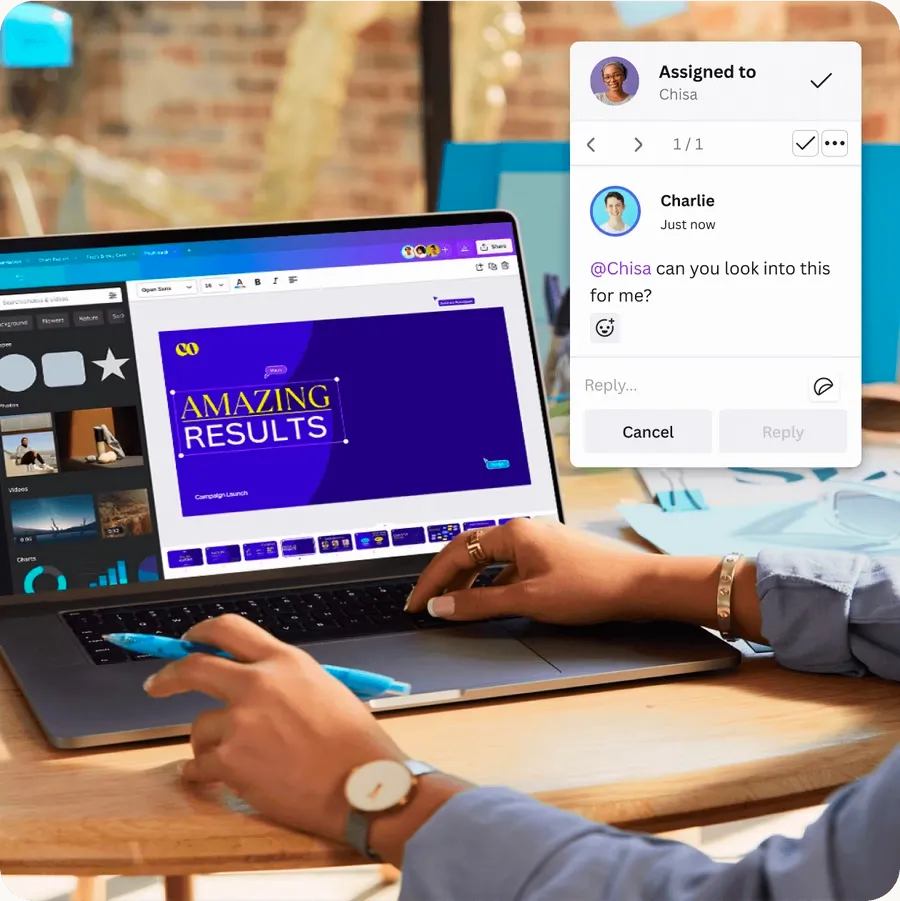
Canva is among the top most successful PLG companies due to its end-user-focused product and frictionless onboarding.
An accelerated sales cycle.
Using PLG to automate and speed up the customer journey of acquisition, activation, and onboarding can reduce sales cycles. With a short sales cycle, companies can reach more customers and make more sales in less time, leading to higher revenues.
You experience faster revenue growth.
Growth is faster for PLG companies. After reaching $10 million in annual recurring revenue (ARR), PLG organizations tend to expand and scale more rapidly than traditional companies.
Advantages and limitations of PLG:
Before we delve into the specifics, it is important to understand that the product-led growth (PLG) strategy, like any sales led strategy or any other business strategy, comes with its unique set of benefits and challenges.
Let's explore these in more detail.
Advantages of PLG:
- Lower operational costs, particularly Customer Acquisition Costs (CAC)
- Bypass sales commissions and leverage scalable growth channels like organic SEO (content building, link building, internal linking, etc.)
- Serve more customers with a small team and potential for viral growth through word-of-mouth referrals
- Recognition of customer preference for independent product evaluation
- Offer free access or trials for customers to assess the product's value on their own terms
- The decision-making process becomes more relevant and tailored to customer preferences
Limitations of PLG:
- Not all users who try the product become paying customers
- Supporting free users incurs costs for server space and handling support tickets
- Lower revenue per customer, especially when targeting small and medium-sized businesses with lower average annual contract values (ACV)
- Gaining traction in the market can be a hurdle
- Heavy reliance on the marketing team for customer acquisition
- Initial momentum can be a significant barrier, particularly for startups
- Limited flexibility in pricing experimentation
- Transparent pricing required for seamless upgrades to paid plans
- Less freedom to gauge customers' willingness to pay and explore different pricing strategies
Product-led sales (PLS) explained
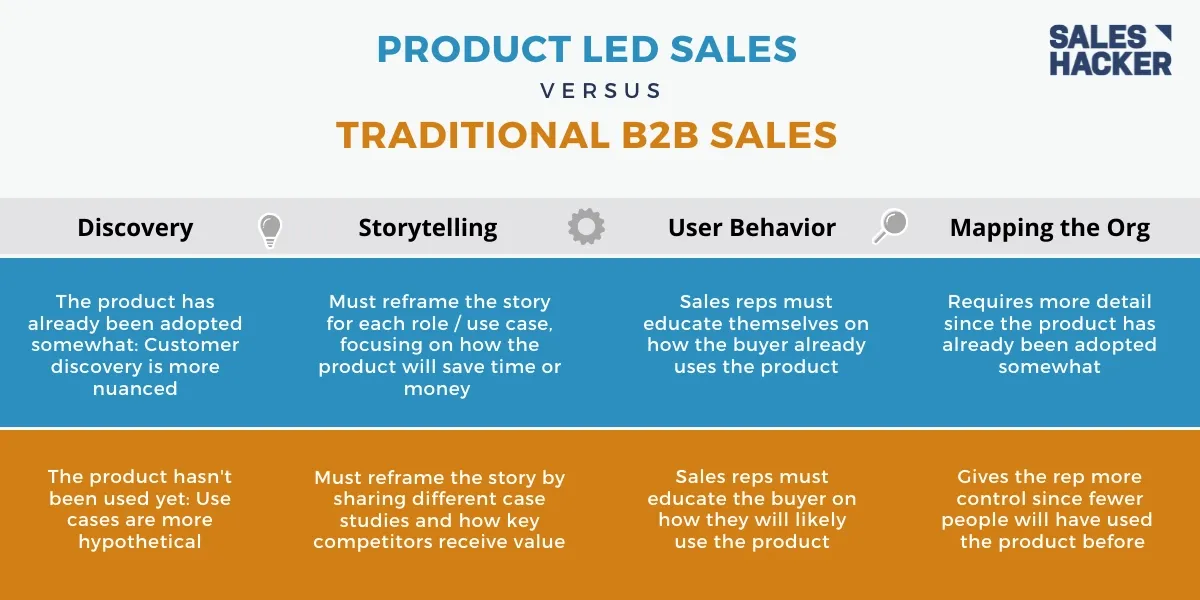
Product-led Sales (PLS) is a strategy designed for product-led companies or those transitioning to a product-led approach. PLS reduces customer acquisition costs, improves conversion rates, and enhances customer retention.
Its distinctive feature is the use of the freemium model.
So, what is PLS? It's all about your sales reps leveraging your product.
By empowering prospects to explore and experience the product themselves, PLS eliminates the complexities of the traditional sales-led approach and streamlines the sales funnel.
With PLS, you can redefine sales. Instead of relying solely on sales representatives, the product takes the lead in showcasing its value to potential and existing customers everywhere.
This hands-on experience enables the sales team and prospective customers to fully understand the product's benefits, leading to greater confidence in their purchasing decisions.
What product-led sales mean for your team
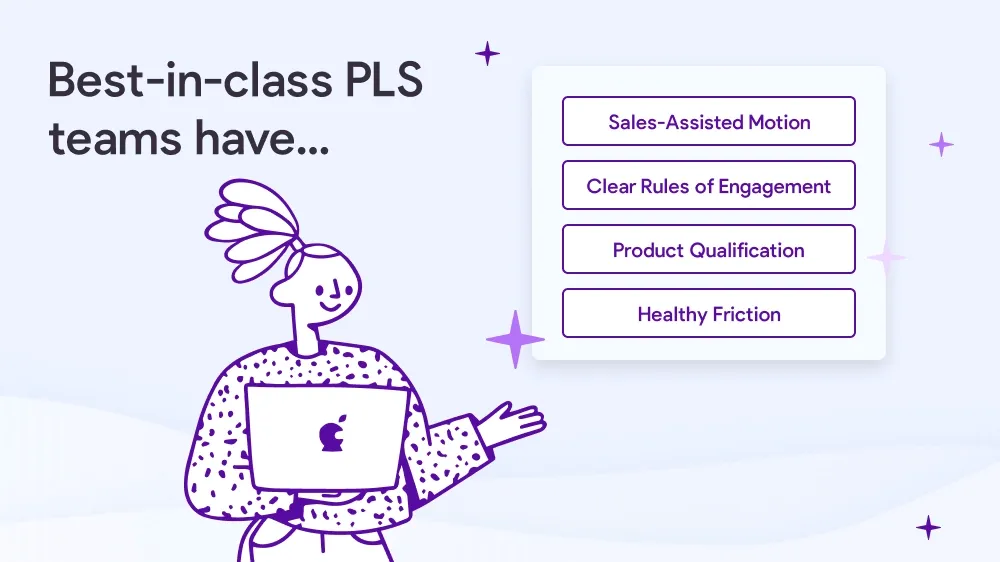
Customers benefit from reduced friction.
PLS reduces friction between customers and value. The system optimizes human touchpoints and adds salespeople only when necessary.
Customers can choose from multiple paths.
PLS meets customers where they are. In some cases, that means speaking with a human, but in others, it means exploring the product independently.
Advantages and limitations of PLS:
Before we unpack the details, it's crucial to note that product-led Sales (PLS), similar to any business with a product-led growth strategy, offers a variety of benefits and also presents some potential limitations.
Let's take a look.
Advantages of PLS:
- Higher revenue per customer: PLS allows for securing more significant deals and achieving a higher average Annual Contract Value (ACV). Customized packages and additional features cater to the unique needs of enterprise customers, enabling substantial profits even with a smaller customer base.
- Retention: The personalized approach of PLS reduces customer churn. Sales representatives tailor demos to address pain points, fostering stronger customer loyalty and encouraging repeat business.
- Pricing flexibility: PLS offers the freedom to keep pricing details private and adjust based on customer requirements.
- Traction: PLS enables proactive lead generation through cold calling and emailing, providing quicker traction than strategies reliant on Search Engine Optimization (SEO).
Limitations of PLS:
- Higher costs, lower scalability: Maintaining a sales team in PLS can be costly due to longer sales cycles and fixed lead generation costs. Competing with product-led growth (PLG) strategies may make it challenging to maintain competitive pricing.
- Scalability: Scaling up the sales team to match customer growth requires effective resource allocation and management.
- Pipeline and conversion rates: PLS often experiences lower conversion rates from website visitors to demo requests than PLG, resulting in a smaller overall sales funnel with fewer qualified leads.
PLG vs PLS: A comparative analysis
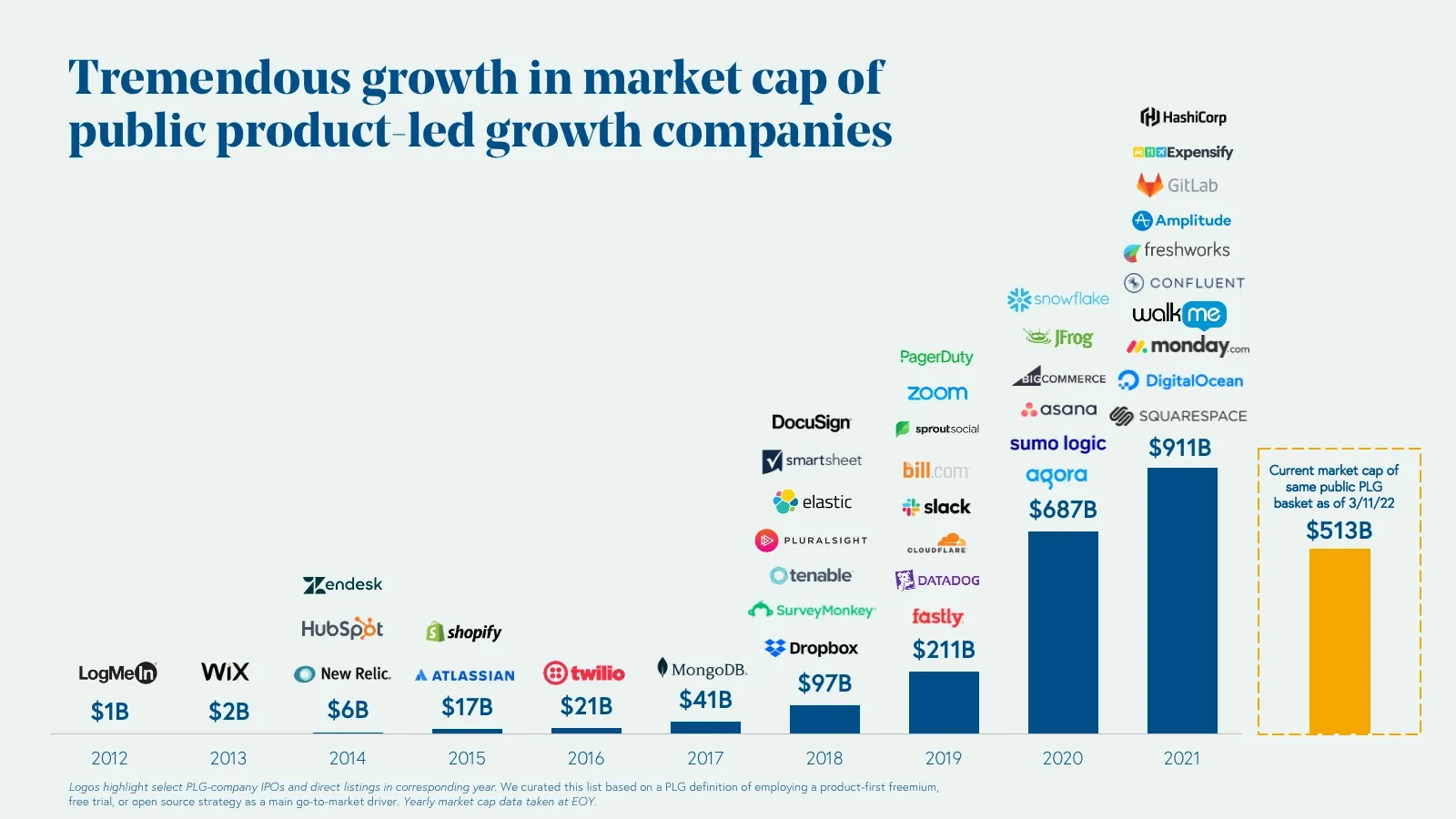
Product-led growth (PLG) and product-led Sales (PLS) are interconnected strategies that offer unique value to businesses.
Companies like Slack and Dropbox have successfully implemented PLG by providing free trial versions that allow users to experience the product's value firsthand, driving customer acquisition and revenue growth.
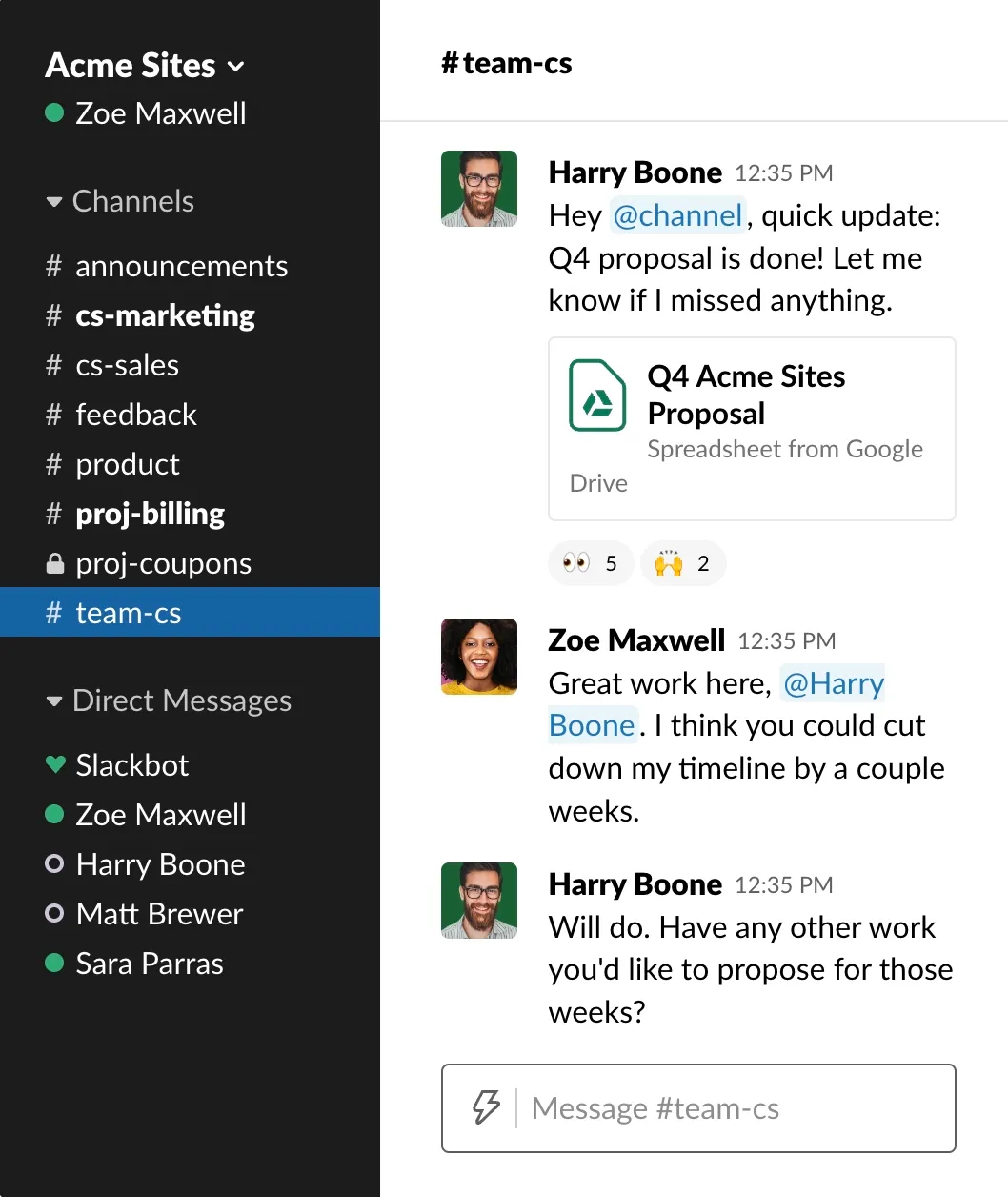
Canva exemplifies PLG by delivering an outstanding product experience complemented by PLS through freemium or free trial models to convert users into paying customers.
While PLG embodies a mindset driving effective processes, PLS operates as a process within that framework.
HubSpot prioritizes customer success, showcasing PLG, while PLS generates quantitative data to optimize sales processes. Zoom integrates PLG and PLS, attracting users with a freemium pricing model and utilizing sales teams for enterprise deals.
By embracing these strategies, businesses can unlock significant advantages, new customers and achieve sustainable success.
The coexistence of PLG and PLS
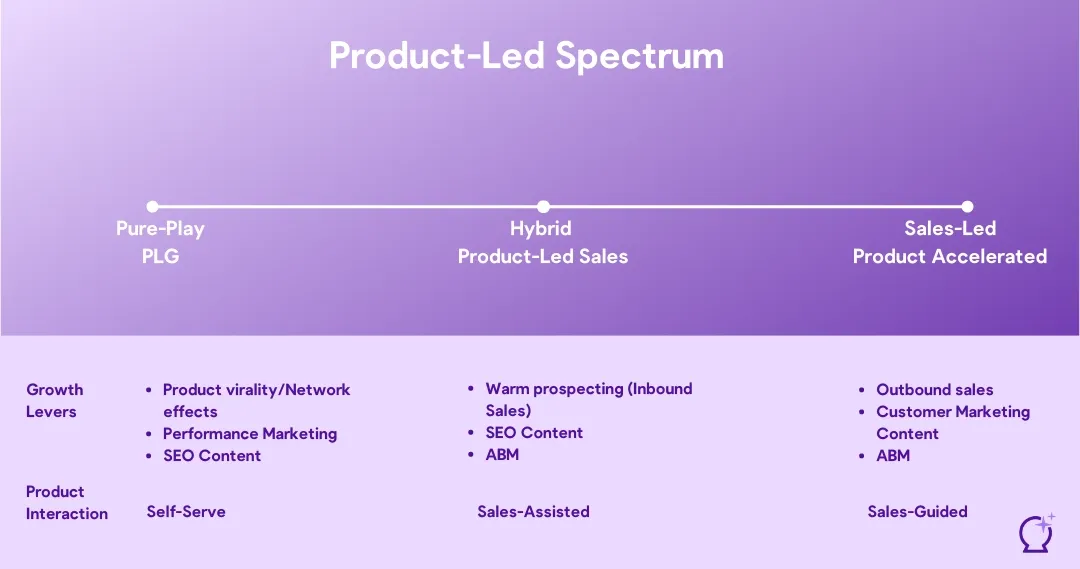
PLG and PLS can effectively coexist in various scenarios, enabling businesses to leverage the advantages of both strategies. Here are a few scenarios:
Freemium model
Companies offering a freemium or free trial model can use PLG to stimulate growth through self-serve sign-ups. In contrast, the sales team can use PLS to convert the free trial users into paying customers.
Enterprise acquisition
For those targeting enterprise software customers, a PLG company can attract these customers by demonstrating the product led company's value. In contrast, PLS can provide the personalized touch, securing sizable contracts and partnerships.
Market expansion
When diving into new markets, a combo of PLG for initial traction and PLS for navigating complex sales processes works wonders.
Upgrades and upselling
Launching new features? Use PLG to spark excitement and PLS to have customer success teams identify upselling opportunities.
Customer success and retention
While PLG ensures a seamless product experience, PLS nurtures relationships, enhancing customer loyalty.
By effectively balancing PLG and PLS, businesses can drive sustainable growth, meet the diverse needs of their customer base, and create a harmonious coexistence of these strategies.
By effectively balancing PLG and PLS, businesses can drive sustainable growth, meet the diverse needs of their customer base, and create a harmonious coexistence of these strategies.
The future of PLG and PLS
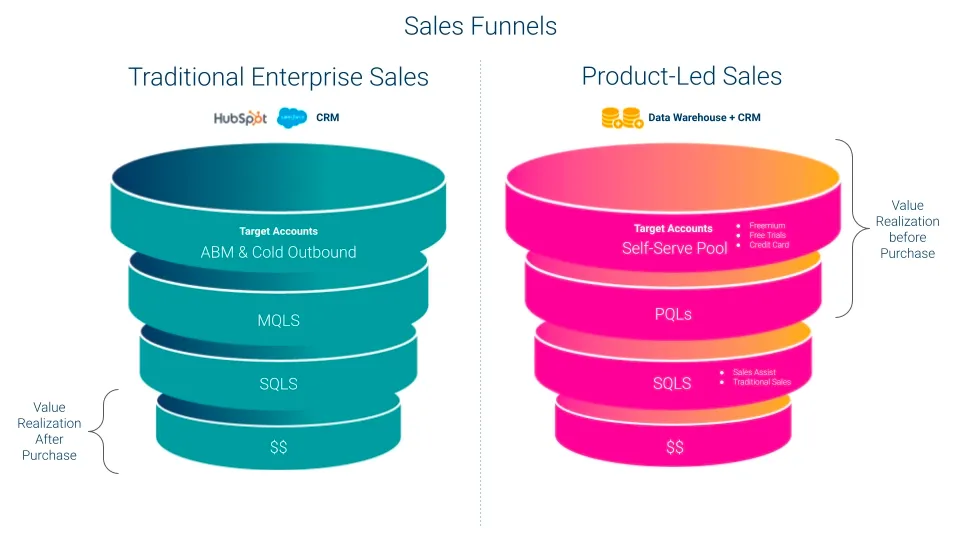
Based on everything we’ve been seeing over the last few years and months, we can predict a few things:
- Data schema opportunities are set for consolidation thanks to tools that simplify data handling.
- The first wave of PLS tools will focus on observability and orchestration.
- Intelligence is critical to prevent data overload in PLG and ensure success.
- More B2B SaaS products will offer free trials or freemium SKUs.
- Non-PLG SaaS companies may struggle with the significant transformation required to adopt PLG.
To overcome these challenges, you could:
Roll out a schema-efficient PLG/PLS database
Make sure the database includes real-time data covering product analytics, marketing, CRM, and more.
Implement an orchestration layer
Use smart tools like Momentum and Correlated to analyze and activate the data across different systems.
Create a PLS operating system
Instead of using tools not designed for PLS, we need a purpose-built CRM system for better user experience and coordinated outreach.
Build an analytical layer overall systems
New data categories and strategies give us a chance to develop analytical solutions that today's CRM tools lack.
Unify PLS and PLG for superior Sales Plays execution
Tools like Switchboard can create personalized onboarding experiences that align with specific sales playbooks.
Building for PLG vs PLS
In a product-led growth model, it's absolutely essential that you have an amazingly smooth onboarding experience, fast time-to-value, and clear demonstrated features.
All of these can be aided by better in-product experiences like nudges: product tours, user assistant, tooltips, and by user assistance tools, like our Copilot.
A product tour can be a powerful way to easily guide users through early onboarding and get them familiar with your features.
Our Copilot user assistant can also answer user questions quickly, connect them to an agent if needed, and even cobrows with them and launch in product experiences like product tours.
Cobrowsing can be very helpful when chat answers aren't ebough!
That's what we obsess about here at Command AI: delivering products that allow you to run your PLG motion smoothly. You can build these experiences in minutes, not days, and do so in a no-code fashion. I won't wax on about it too much, but if you're interested in learning more, you can check out a quick demo and see if it might be a good fit.
On the other hand, if you're running a product-led sales motion, you might have a huge sales team, but might not have the best conversion rates into demos, and you might have to work more on both your upfront marketing messaging AND your actual demo experience as well.
If you're going to have sales folks leading folks through it, you need to be able to wow them not just in that call, but also later on, which requires a lot of that same in-app messaging and more.
In either strategy, having a great UX and smart targeted in-app messaging is key. Command AI can help you execute both motions at the highest level.
Navigating growth strategies in the SaaS world
The future of PLG is all set to mingle with data-driven sales. It's like entering a new age where it's not just about a cool product but how that product sells itself. In fact, half the companies in a 2022 survey are ready to double their PLG investments.
But it's not an "either-or" between PLG and PLS. It's about blending the two.
The real winners will be those who can mix up their product and their sales cycle strategies just right. They'll make a growth model that's customer-focused, uses data well, and can adapt to change.
However, it might not be smooth sailing for all.
Just like earlier companies struggled to move from physical software to cloud, some today might find it tough to adopt PLG. But hey, this change also opens up chances for newbies to make their mark.
So, what's the future of PLG looking like? It's going to be a wild, thrilling ride. It's clear now—it's not just about creating an amazing product but also about how that product can sell itself.
Are you ready to transform your business model and experience exponential growth with a product-led strategy that guarantees lower acquisition costs and improved retention rates? Craving a deeper connection with your customers? Click here to unlock the power of product-led growth and Sales strategies – reduced costs, scalability, and a customer-centric business model.


















